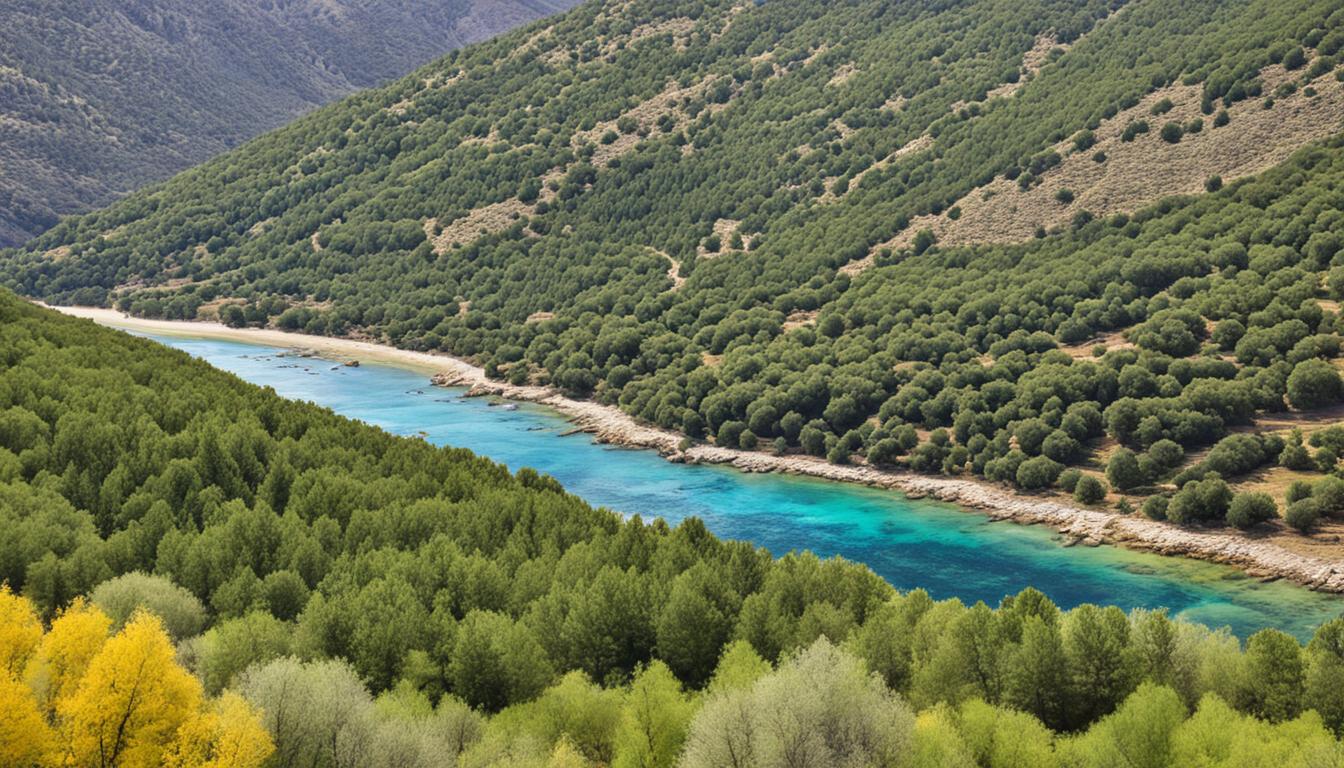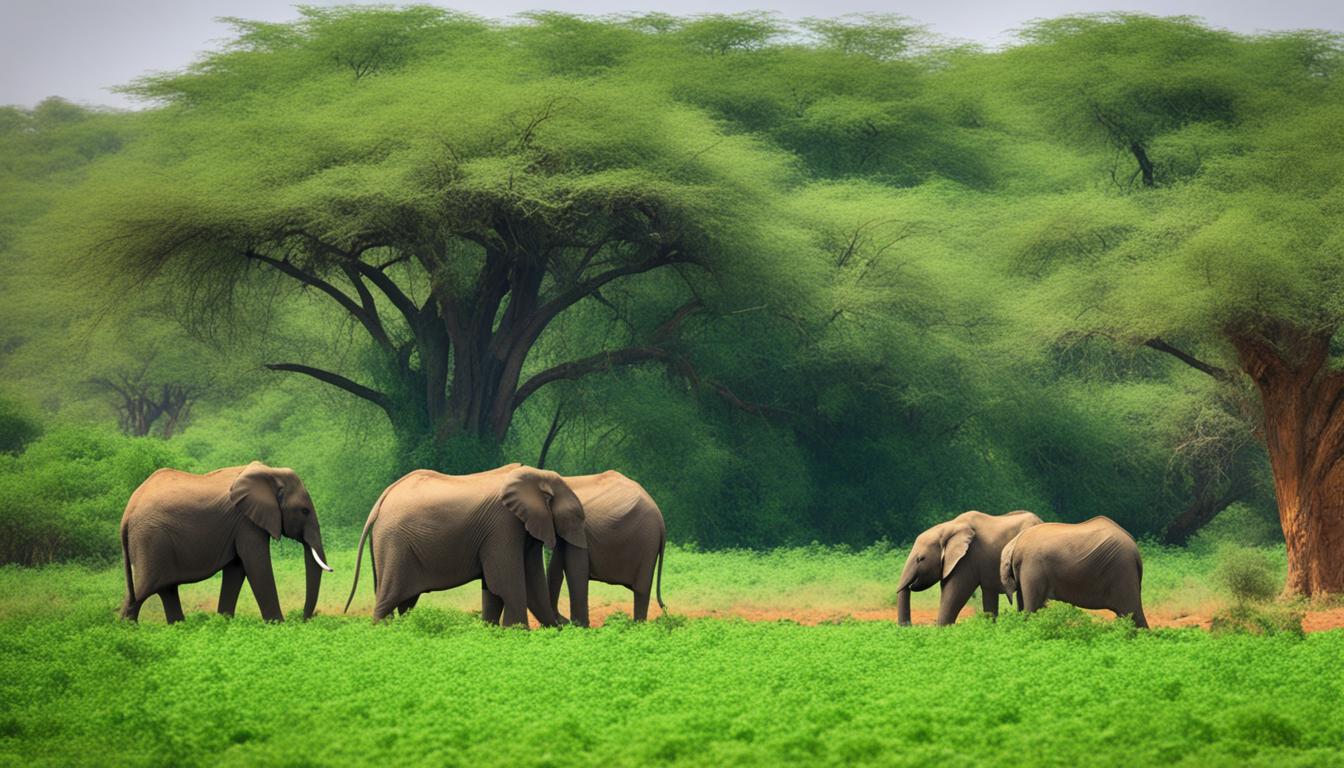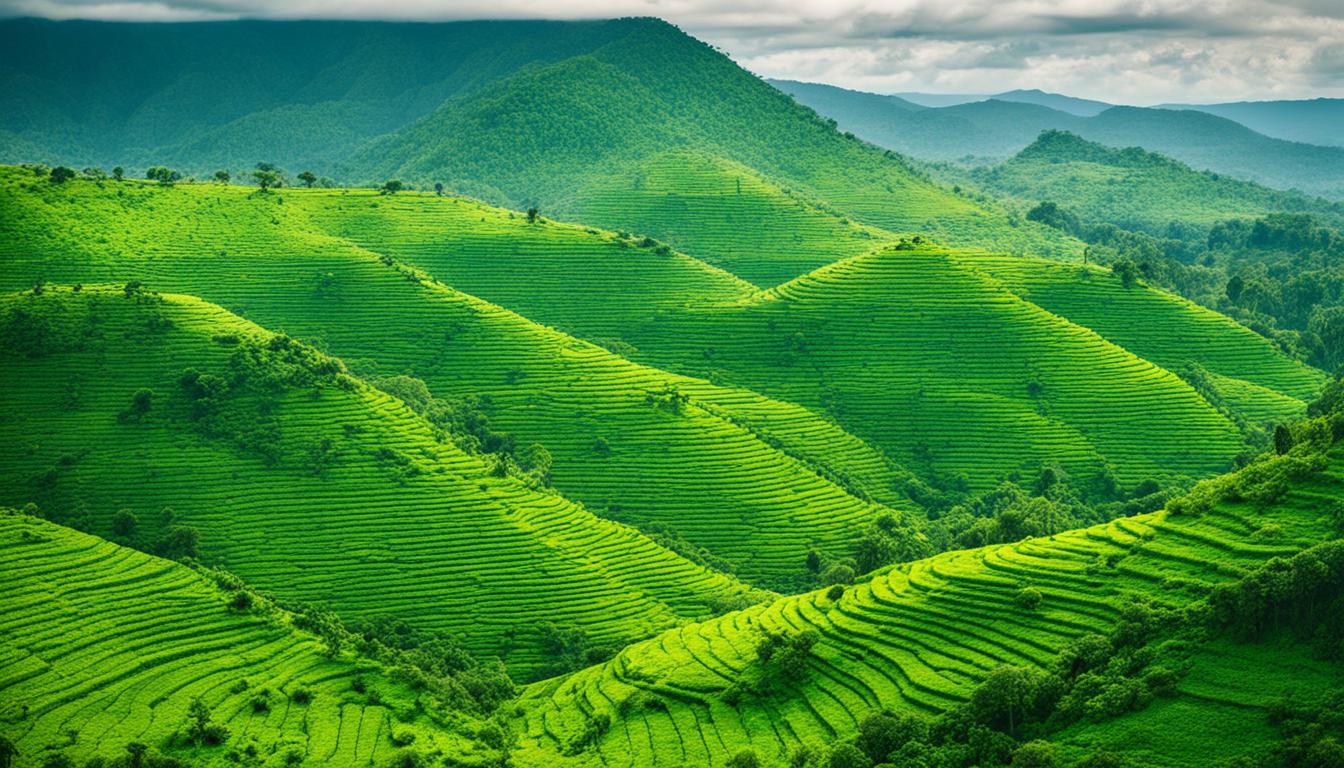Sweden Biodiversity: Animal and Plant Species and What Is Under Threat
Did you know that in the Swedish agricultural landscape, 132 species have become extinct? Despite its reputation as a country with abundant natural beauty, Sweden’s biodiversity is facing significant challenges. The diverse landscape and varied ecotypes of Sweden offer a wide range of habitats for animal and plant species. However, factors such as land use changes, climate change, and pollution are posing a threat to the country’s rich biodiversity.
From forests to wetlands and coastal areas, each ecosystem plays a vital role in supporting a wide array of species. However, many of these habitats and the species inhabiting them are at risk. Red-listed species, those considered to be at high risk of extinction, are particularly vulnerable, with some showing signs of deterioration in their populations and distribution.
In this article, we will explore the state of biodiversity in Sweden, the significance of forests, wetlands, and coastal habitats, the challenges faced by different ecosystems, and the measures being taken to protect and conserve biodiversity in the country.

Key Takeaways:
- Sweden has a varied landscape with many different ecotypes, providing habitats for diverse animal and plant species.
- The agricultural landscape in Sweden has seen the extinction of 132 species, highlighting the threats faced by biodiversity.
- Forests, wetlands, and coastal areas are essential ecosystems for supporting biodiversity in Sweden.
- Red-listed species, those at high risk of extinction, are particularly vulnerable to the impacts of land use changes, climate change, and pollution.
- Sweden has taken measures to protect and conserve biodiversity, but further actions and collaborations are needed for long-term sustainability.
The Importance of Forests in Sweden’s Biodiversity
Forests play a crucial role in maintaining biodiversity in Sweden. Covering approximately 58% of the country’s land surface, forests are home to a significant number of diverse plant and animal species.
Sweden boasts the largest area of old-growth boreal forests in Western Europe, making it a biodiversity hotspot. These forests provide vital habitats for numerous endangered species, contributing to the overall ecological richness of the region.
However, despite their importance, many of Sweden’s forest habitats have not achieved favourable conservation status. Nearly half of the red-listed species in Sweden can be found in these forests, indicating the urgent need for biodiversity conservation measures.
Concerns also exist regarding forest practices, such as logging and the use of exotic tree species, which can have a detrimental impact on biodiversity. These activities disrupt natural ecosystems and threaten the survival of indigenous species.
“Forests are not just a source of timber; they are complex ecosystems that support a wide range of flora and fauna. Their conservation is crucial for preserving Sweden’s biodiversity heritage and ensuring the survival of endangered species.”
In order to effectively conserve biodiversity in Sweden’s forests, it is essential to implement sustainable forest management practices that prioritise the protection and restoration of natural habitats. This includes promoting the use of native tree species and minimising the ecological footprint of logging operations.
Furthermore, preserving and expanding protected areas within forests can provide a safe haven for endangered species, allowing their populations to recover and thrive. These designated areas help safeguard biodiversity hotspots and maintain a healthy balance within the ecosystem.
Efforts are ongoing to raise awareness about the importance of forests in biodiversity conservation in Sweden. Through education and research initiatives, stakeholders aim to foster a deeper understanding of the interconnectedness between forests and the survival of various plant and animal species.
Wetlands and Freshwater Ecosystems in Sweden
Sweden boasts a wealth of wetlands, with lakes covering 9% of the land area and wetlands occupying over 10%. These aquatic habitats play host to a significant number of the Swedish red-listed species, demonstrating the importance of these ecosystems in supporting biodiversity.
Over the years, there have been some encouraging developments in the status of red-listed species within the wetlands and freshwater ecosystems. Between 2000 and 2005, improvements were observed, particularly in terms of enhanced water quality and restoration measures. These positive changes highlight the potential for effective conservation efforts in these fragile environments.
However, challenges persist in the form of habitat fragmentation and the decreasing availability of suitable spaces for important fish species. These hurdles can hinder the long-term viability of aquatic ecosystems and the diverse wildlife they support.
The Role of Biodiversity Research in Sweden’s Wetlands
Biodiversity research in Sweden plays a crucial role in understanding the complex interactions within wetland ecosystems and aids in the identification of potential conservation strategies. By studying wildlife diversity in Sweden’s wetlands, scientists can gain insights into the interdependencies between species and their habitats, guiding efforts to preserve these vital ecosystems.
“Biodiversity research is pivotal in unlocking the secrets of wetland ecosystems, enabling us to safeguard these valuable habitats and the magnificent wildlife they sustain.”
To further highlight the significance of biodiversity in Sweden’s wetlands, let’s take a closer look at a table showcasing selected wetland species and their conservation status:
| Species | Conservation Status |
|---|---|
| Common Crane | Endangered |
| European Otter | Vulnerable |
| Great Crested Grebe | Near Threatened |
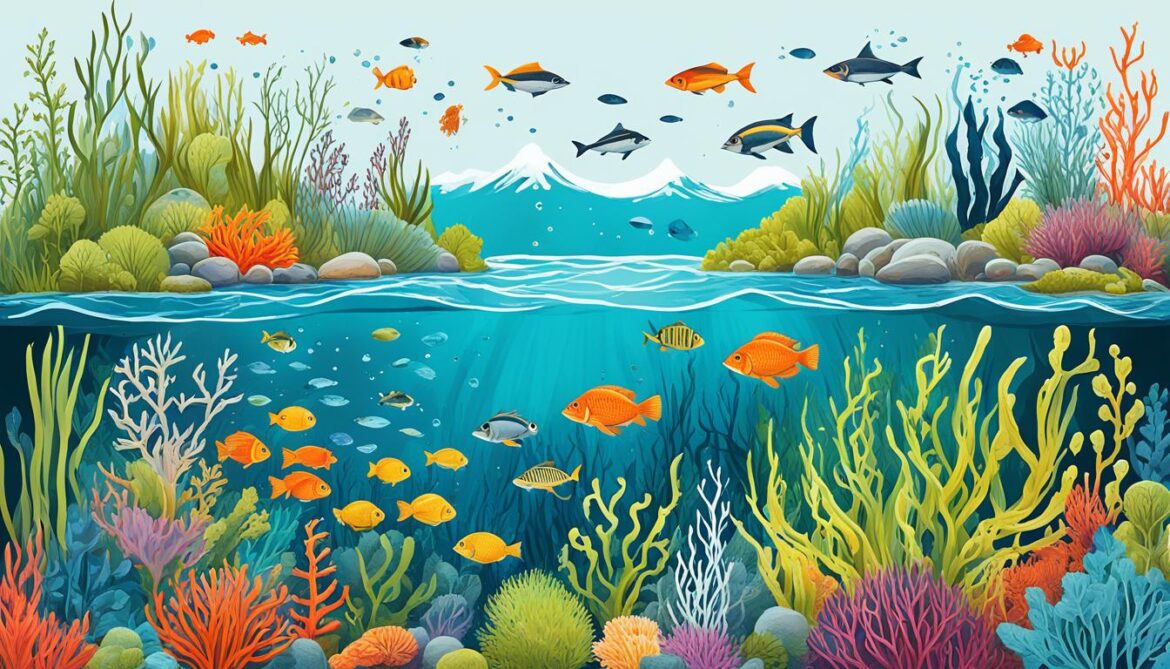
Table: Selected wetland species and their conservation status in Sweden.
These species serve as a reminder of the diverse range of wildlife at stake and the urgent need to protect these delicate ecosystems.
The Unique Coastal Habitats of the Baltic Sea
The north of the Baltic Sea in Sweden creates unique coastal habitats, offering a diverse range of flora and fauna. The brackish water found in the Baltic provides distinctive conditions that support a rich marine biodiversity. However, the environmental status of the Baltic Sea remains concerning, with numerous marine habitats failing to achieve favourable conservation status.
This has significant implications for the endangered species in Sweden, as many of them rely on these marine ecosystems and seashores for their survival. Unfortunately, between 2000 and 2005, there was a deterioration in the status of numerous Swedish red-listed species found in these coastal habitats.
Efforts are underway to address these issues and protect the marine biodiversity in Sweden’s coastal areas. One approach is the establishment of marine nature reserves, which aim to safeguard vital habitats and ensure the survival of endangered species. Additionally, measures are being taken to combat illegal oil discharges that pose a threat to the Baltic Sea ecosystem.
“The north of the Baltic Sea in Sweden offers a remarkable array of coastal habitats, each playing a vital role in supporting the unique marine biodiversity found in this region.”
To gain a better understanding of the challenges facing marine biodiversity in Sweden, further research and monitoring are required. By studying these coastal habitats, scientists can identify effective conservation strategies and work towards the long-term sustainability of these fragile ecosystems.

Loss of Biodiversity in Sweden
Despite efforts to reduce the loss of biodiversity, there are indications that it is still continuing in Sweden. Vascular plants, macrofungi, butterflies, and beetles are particularly at risk, with a high proportion of threatened species. The 2007 national assessment of the conservation status of species and habitats found that many listed habitats have unfavorable conservation status. The main threats to biodiversity in Sweden include intensification and abandonment of agricultural ecosystems, simplification of forest ecosystems, drainage and land use changes in wetlands and freshwater ecosystems, and expansive fishing and climate change in marine ecosystems.
To illustrate the challenges faced by Sweden’s biodiversity, here is a table highlighting some of the endangered species in different habitats:
| Habitat | Endangered Species | Threats |
|---|---|---|
| Forest | European mink | Habitat loss and degradation, pollution |
| Wetland | Nordic toad | Drainage, habitat fragmentation |
| Marine | Baltic cod | Overfishing, habitat destruction |
It is essential to address these threats and implement effective conservation measures to safeguard the rich wildlife diversity in Sweden.
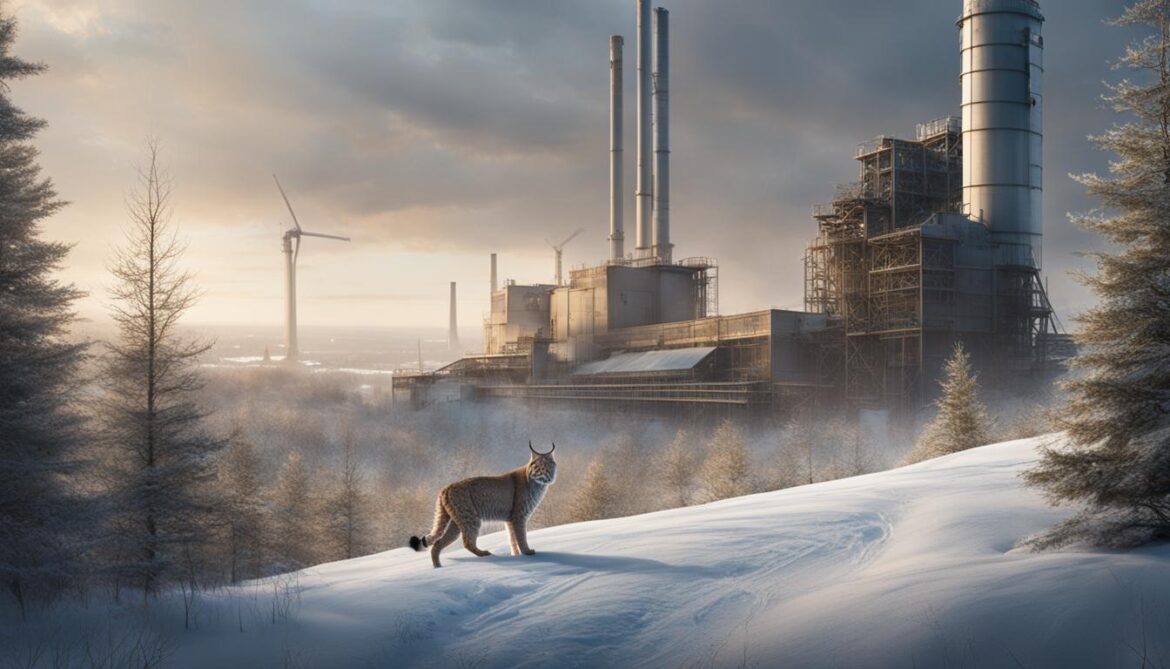
Measures to Protect Biodiversity in Sweden
Sweden takes biodiversity conservation seriously and has implemented several measures to protect its rich natural heritage. These efforts align with the objectives of the Convention on Biological Diversity and aim to safeguard the country’s diverse ecosystems and species.
Development of Sectoral Action Plans
One of the key strategies adopted by Sweden is the development of sectoral action plans. These plans provide a framework for integrating biodiversity considerations into various sectors such as forestry, agriculture, and physical planning. By incorporating biodiversity into sector-specific policies and practices, Sweden ensures that sustainable development is prioritized and the impacts on biodiversity are minimized.
Establishment of Protected Areas
Sweden has also established a network of protected areas to preserve its unique ecosystems and species. These protected areas serve as havens for biodiversity, allowing natural processes to flourish undisturbed. By designating specific areas as protected, Sweden safeguards critical habitats and ensures the long-term survival of endangered species.
Integration of Biodiversity Considerations
Another important aspect of Sweden’s approach to biodiversity conservation is the integration of biodiversity considerations into various policies. For example, in forestry practices, there is a focus on sustainable management and maintaining biodiversity within forested landscapes. Similarly, in agriculture, efforts are made to promote environmentally-friendly practices that support biodiversity conservation. Additionally, physical planning policies take into account the need to preserve natural spaces and connectivity between habitats to avoid fragmentation.
Biodiversity Research and Education
Sweden recognizes the importance of scientific research and education in furthering our understanding of biodiversity and its conservation. The country invests in biodiversity research to gain insights into ecosystems, species behavior, and the impact of human activities. By promoting education and awareness, Sweden aims to foster a culture of conservation among its citizens and inspire them to actively participate in biodiversity protection.
To summarize, Sweden’s commitment to biodiversity conservation is evident through the implementation of sectoral action plans, the establishment of protected areas, the integration of biodiversity considerations into policies, and its investment in research and education. These measures contribute to the preservation of Sweden’s unique biodiversity for future generations.

| Measures | Description |
|---|---|
| Development of Sectoral Action Plans | Integrating biodiversity considerations into forestry, agriculture, and physical planning. |
| Establishment of Protected Areas | Creating designated areas to preserve critical habitats and endangered species. |
| Integration of Biodiversity Considerations | Incorporating biodiversity into sector-specific policies and practices. |
| Biodiversity Research and Education | Investing in scientific research and promoting awareness through education. |
Financial Resources for Biodiversity Conservation in Sweden
Sweden recognizes the importance of allocating financial resources to support biodiversity conservation efforts. These resources play a crucial role in implementing conservation strategies and addressing the various threats that biodiversity faces in the country.
While the available data does not provide specific details on the funding and its allocation, it is encouraging to know that Sweden acknowledges the significance of investing in biodiversity conservation. With adequate financial resources, initiatives can be implemented to protect and restore habitats, promote sustainable land and water management practices, and support research and monitoring efforts.
“Investing in biodiversity conservation is not only vital for ensuring the survival of fragile ecosystems and the species that depend on them, but it also contributes to the long-term sustainability and resilience of Sweden’s natural environment.”
By channeling financial resources into biodiversity research in Sweden, scientists and researchers can gain a deeper understanding of the country’s unique ecosystems and the intricate relationships between species. This knowledge is vital for making informed decisions and developing effective conservation strategies.
Moreover, financial resources facilitate collaboration and partnerships among government agencies, non-profit organizations, and local communities, creating a collective effort in preserving and protecting Sweden’s biodiversity for future generations.

| Key Points |
|---|
| Sweden recognizes the importance of allocating financial resources to support biodiversity conservation efforts. |
| Specific details about funding and its allocation are not provided in the available data. |
| Investing in biodiversity conservation contributes to the long-term sustainability and resilience of Sweden’s natural environment. |
| Financial resources support biodiversity research, enabling a deeper understanding of Sweden’s unique ecosystems. |
| Collaboration and partnerships are fostered through the allocation of financial resources. |
Monitoring and Evaluation of Biodiversity in Sweden
Sweden recognizes the importance of monitoring and evaluating biodiversity to assess the effectiveness of conservation efforts and inform future actions. The country has established a comprehensive system for monitoring biodiversity, which includes the development of indicators, assessment criteria, and statistics. By closely monitoring key aspects of biodiversity, Sweden can gain valuable insights into the status and trends of wildlife diversity in Sweden, supporting evidence-based decision-making.
The monitoring process involves the collection of data on various parameters, such as species abundance, population size, and habitat condition. These data are used to track changes in biodiversity over time and assess whether conservation interventions are having the desired impact. By regularly evaluating the progress made towards biodiversity objectives, Sweden can identify areas where further action is needed and implement targeted conservation measures.
While the specific details of the monitoring and evaluation processes in Sweden are not provided in the available data, it is evident that the country places a strong emphasis on the systematic assessment of biodiversity. This commitment to ongoing monitoring ensures that biodiversity research in Sweden is robust and supports the development of effective conservation strategies for the protection of wildlife diversity.
| Benefits of Monitoring and Evaluation | Challenges in Monitoring Biodiversity |
|---|---|
|
|
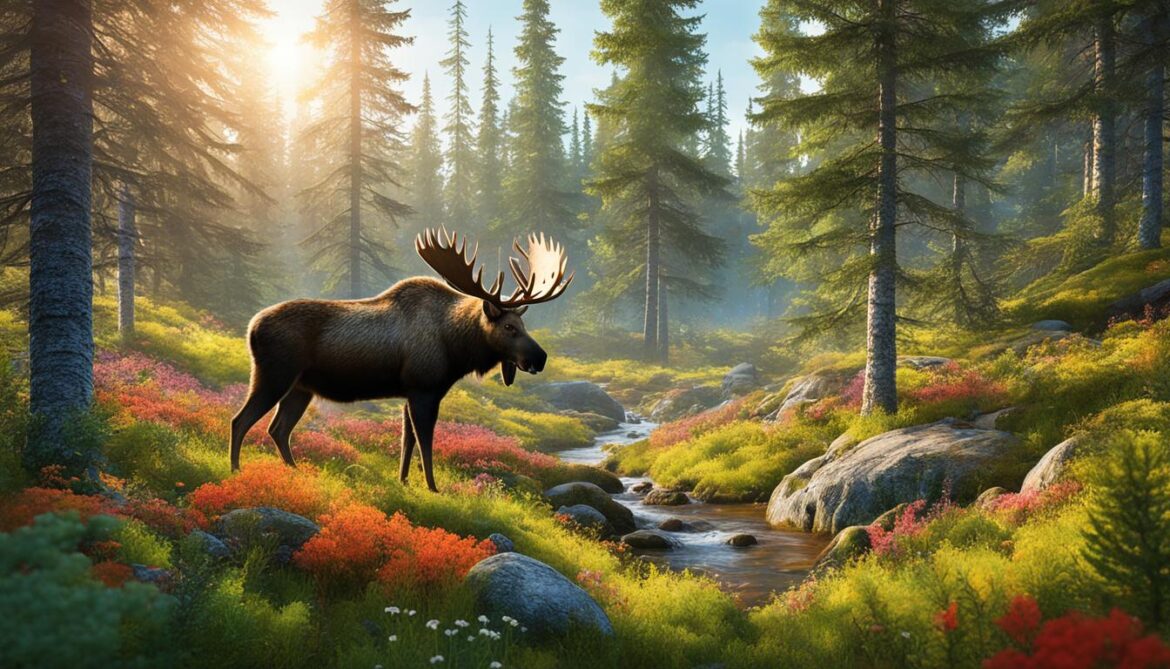
“Monitoring and evaluating biodiversity is crucial for effective conservation. By understanding the current state of wildlife diversity in Sweden, we can implement targeted measures to protect threatened species and habitats. Continuous monitoring also allows us to adapt our strategies based on scientific evidence, ensuring the long-term sustainability of Sweden’s rich biodiversity.”
Conclusion
Sweden’s rich biodiversity is under threat from land use changes, climate change, and pollution. To combat these challenges, significant efforts are being made to protect and conserve biodiversity throughout the country. One of the key strategies in place is the establishment of protected areas, which serve as crucial habitats for diverse plant and animal species.
Moreover, sectoral action plans have been implemented to integrate biodiversity considerations into various industries such as forestry, agriculture, and physical planning. By incorporating biodiversity into these sectors, Sweden aims to achieve a more sustainable and harmonious relationship between human activities and the natural environment.
However, despite these proactive measures, there is still a need for further actions and collaborations to ensure the long-term sustainability of Sweden’s biodiversity. Ongoing research and monitoring efforts are essential to understand the changing dynamics of biodiversity and to develop effective conservation strategies. Additionally, public awareness and education play a vital role in fostering a culture of biodiversity conservation and sustainable practices among the Swedish population.
In conclusion, the preservation of Sweden’s unique and diverse ecosystems requires continuous commitment and cooperation from all stakeholders. By actively working together to address the threats facing Sweden’s biodiversity, we can strive towards a future where the country’s natural heritage is protected and cherished for generations to come.




